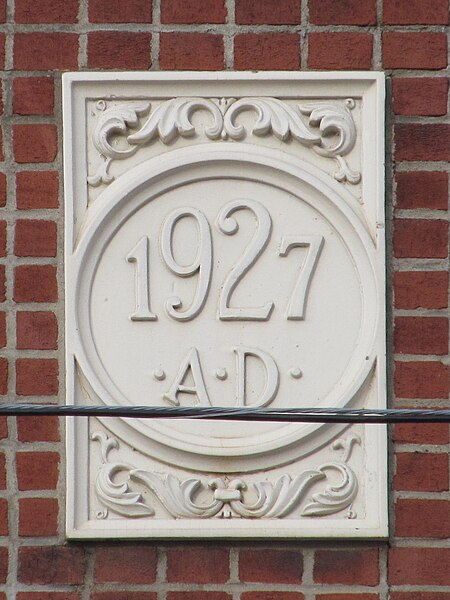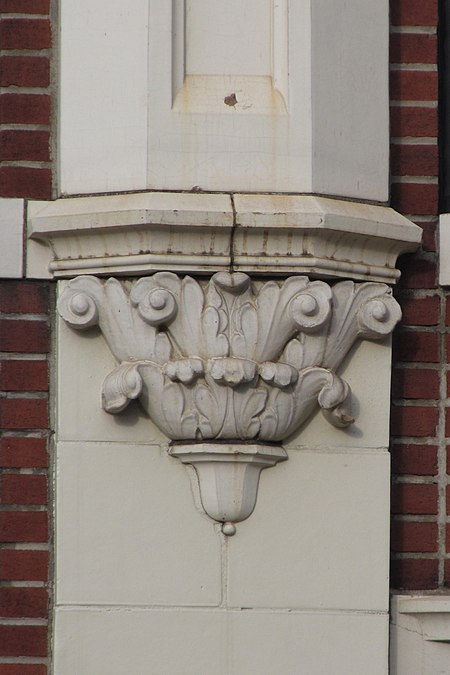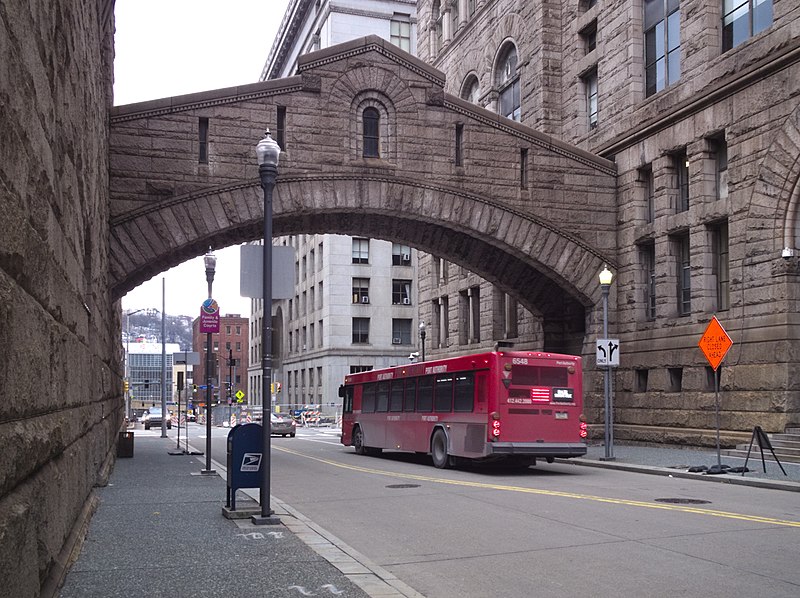
The Trimont apartments on Mount Washington, outlined against winter clouds.

The Tudor style was very popular for large houses in Pittsburgh in the early twentieth century, and in Schenley Farms, that exceptional enclave of exceptionally fine houses in the Oakland medical-intellectual district, it is the single most popular style. The hallmark of the style is half-timbering: exposed wooden beams with stucco (or some such material) between them. Here is a random selection of Tudor houses; we’ll see more of them shortly, since, with the leaves gone for the winter, now is the time to get pictures of the houses behind the trees.




This last house is an interesting example of the survival of the style into the middle twentieth century: it is later than most of its neighbors, and probably dates from the 1930s at the earliest, but it adapts the Tudor style to a lower budget and more modest size.

Jacobean Gothic is filtered through an Art Deco lens in this building from 1927, which has been sympathetically modernized with current materials that fit with and emphasize its distinctive character. The original terra-cotta ornaments have been lovingly preserved. This is a good example of how a commercial building can be brought up to date with good taste on a limited budget. Old Pa Pitt has not been able to determine what the building’s original name was; it now belongs to an organization for senior citizens.

Father Pitt knows how his readers appreciate a good utility cable, so here is a fine closeup of one, unfortunately marred by a date stone in the background.


Formerly Grace Episcopal Church, this church was built in 1852 and “rebuilt” in 1926, according to the Pittsburgh History and Landmarks plaque. Father Pitt cannot say how much of the old building is left, but it would appear to have been a frame structure, which suggests that the current church was completely new in 1926. Regardless, the design is timeless; as soon as it was put up, it must have looked as if it had been there forever. The architect, again according to the plaque, was J. Stewart, Jr.
These pictures were taken back in October, when there were leaves.




The Carnegie Science Center was designed by Tasso Katselas, and in Father Pitt’s opinion the design worked very well for its intended purposes. It had to be flexible enough to house many different kinds of exhibitions. It had to look sciencey. Most important, it had to enthrall children. It does all those things. Old Pa Pitt would never pick this as the most beautiful building on the North Side, but it has been a favorite destination for a generation of Pittsburgh children, many of whom have actually walked out better educated than they were when they walked in.
John Massey Rhind, Andrew Carnegie’s favorite sculptor, decorated the Carnegie Institute building with bronzes representing the Noble Quartet—science, art, music, and literature—to which the Institute was dedicated. At street level, each member of the quartet is represented by a portrait of one of its famous representatives. Above each statue, on the roof, is an allegorical group of female figures representing the abstract ideal. We have seen the pictures of the statues before, but since old Pa Pitt just recently took pictures of the allegorical groups, he thought it might be interesting to see everything together at once.

Galileo.



Michelangelo.



Bach.







Steel Plaza was designed in the 1980s, and its architecture is an interesting combination of Brutalist and Postmodern styles—the two most prominent materials are raw concrete and polished granite. It was built as a junction station, where the main subway line met the spur to Penn Station, which is not in regular service these days. In the picture below, the main line is on the left, and the spur is on the right.





The Bridge of Sighs connected the Allegheny County Courthouse with the jail across Ross Street. Now it connects the bureaucracy in the courthouse with more bureaucracy in the repurposed jail building, so that the name is just as appropriate. In the picture above, for a bit of a change of pace, old Pa Pitt gives you a bus driving away from you, which gives us a good sense of scale.

